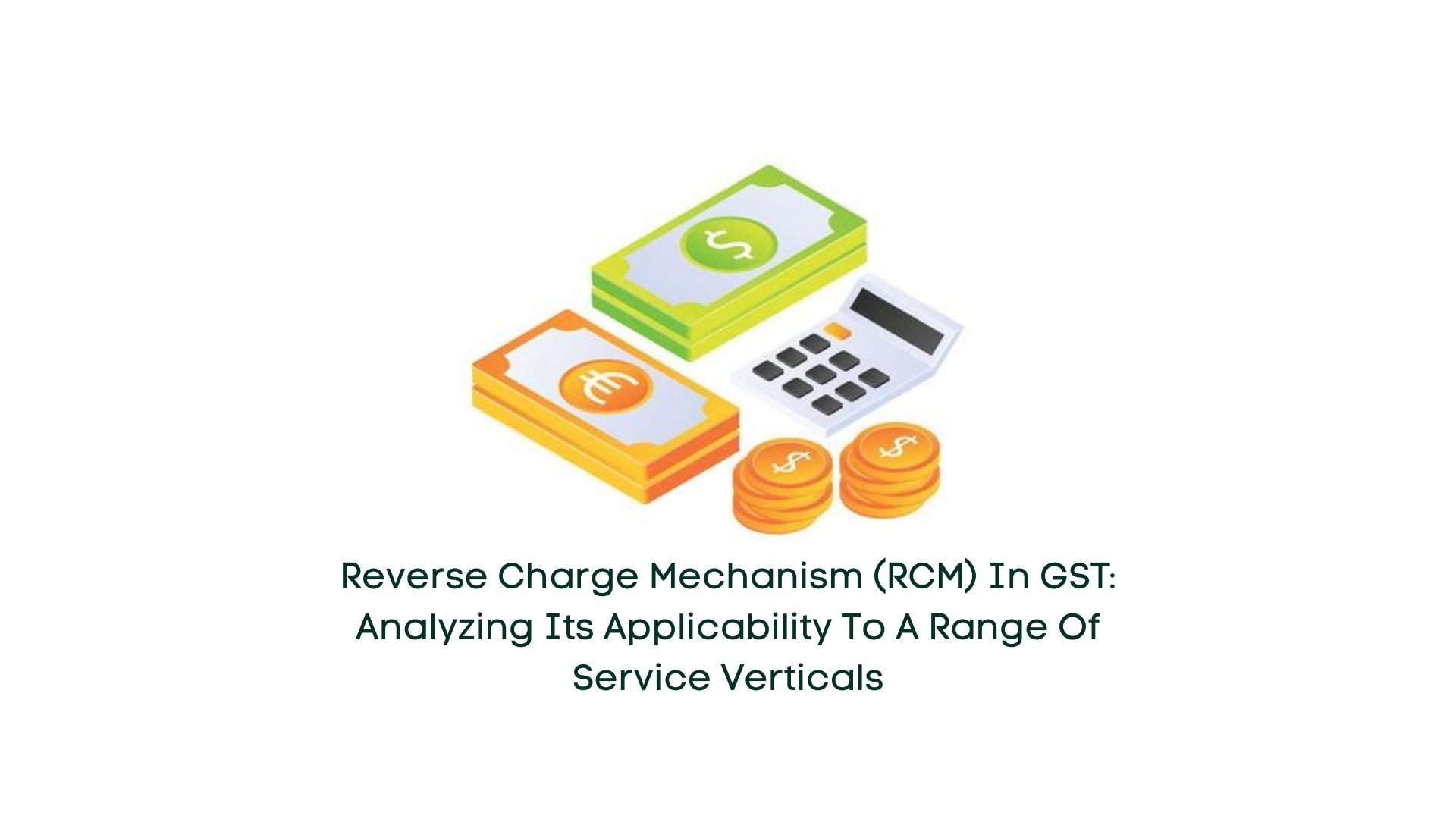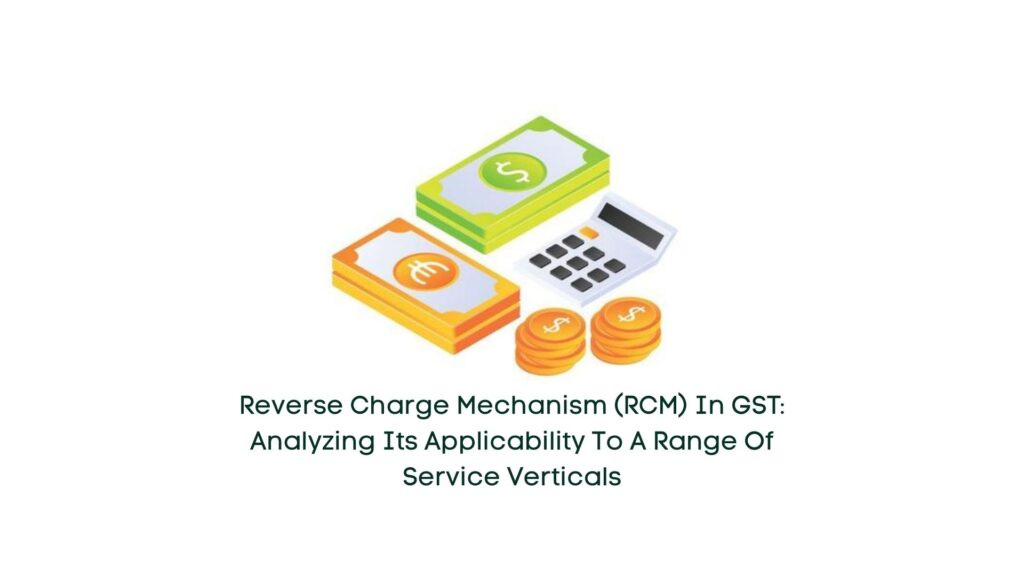
28 Feb Reverse Charge Mechanism (RCM) in GST: Analyzing its Applicability to a Range of Service Verticals

The introduction of GST brought significant transformations to the taxation landscape of the nation, transitioning from an origin-based to a destination-based tax system. GST encompasses both goods and services under a single tax regime. However, akin to the Service Tax regime, GST also operates under two distinct mechanisms for tax imposition: Forward Charge Mechanism and Reverse Charge Mechanism (RCM). This blog delves into the intricacies of the Reverse Charge Mechanism within the GST framework, elucidating its various facets and implications across diverse service sectors.
Exploring Reverse Charge Mechanism (RCM):
In the conventional scenario, the supplier of goods/services bears the GST liability. Conversely, under the Reverse Charge Mechanism, the onus of tax payment shifts to the recipient of goods/services. The rationale behind implementing RCM stems from several considerations:
- Instances where RCM is applicable often involve unregistered or small-scale suppliers, posing challenges in tax collection and compliance. By imposing the tax liability on larger corporate entities, tax collection becomes more feasible.
- In cases of imports, recovering tax from foreign suppliers outside India is impractical. However, the recipient, located within India, can shoulder the tax burden.
Determining the Levy of GST under Reverse Charge:
The application of RCM is delineated into two scenarios as per statutory provisions:
- Based on the nature of supply and/or supplier: The Central Board of Indirect Taxes and Customs (CBIC) periodically notifies a list of goods/services falling under RCM, specifying the nature of supply and the involved entities. This comprehensive list is accessible on the CBIC website.
- Supply by an unregistered supplier to a registered recipient: In such instances, the registered recipient assumes the responsibility of tax payment.
Obligations of Suppliers and Recipients under GST RCM:
For Suppliers:
- Invoices must explicitly indicate the applicability of RCM.
- Suppliers are ineligible for Input Tax Credit.
- Maintaining meticulous records of supplies falling under RCM is imperative.
For Recipients:
- The recipient is deemed the taxpayer for all intents and purposes.
- Preparation of payment vouchers is mandatory.
- Registration is compulsory without any threshold limit for supplies under RCM.
- Accurate record-keeping of RCM-covered supplies is essential.
- Payments under RCM should be debited from the Electronic Cash Ledger.
Special Cases of GST Reverse Charge Mechanism:
- Goods Transport Agency (GTA) Service: Non-government entities availing GTA services are subject to RCM unless the GTA opts for the forward charge mechanism at a rate of 12%.
- Import of Services: Importers are obligated to pay tax under RCM for services acquired from foreign territories.
- Real Estate Sector: Builders are required to procure a minimum of 80% of stock from registered suppliers; failing which, a tax of 18% is levied on the shortfall.
- E-Commerce Sector: E-commerce operators are mandated to register without any threshold limit. Specific services enlisted necessitate tax payment under RCM.
Key Provisions Governing GST RCM:
- Registration is compulsory for entities liable under RCM, irrespective of turnover thresholds.
- Time of Supply determines the GST liability, delineated by specific timelines for goods and services.
- Input Tax Credit is unavailable to suppliers but can be claimed by the recipient.
- Cash payment is requisite for taxes under RCM, precluding the use of input tax credit.
Conclusion:
In summary, the Reverse Charge Mechanism within the GST framework serves as a regulatory tool, streamlining tax collection across diverse sectors. This blog extensively elucidated the provisions of GST under RCM, along with its application in various industry segments. Under RCM, the recipient assumes the tax liabilities, aligning with the responsibilities typically borne by the supplier.


No Comments